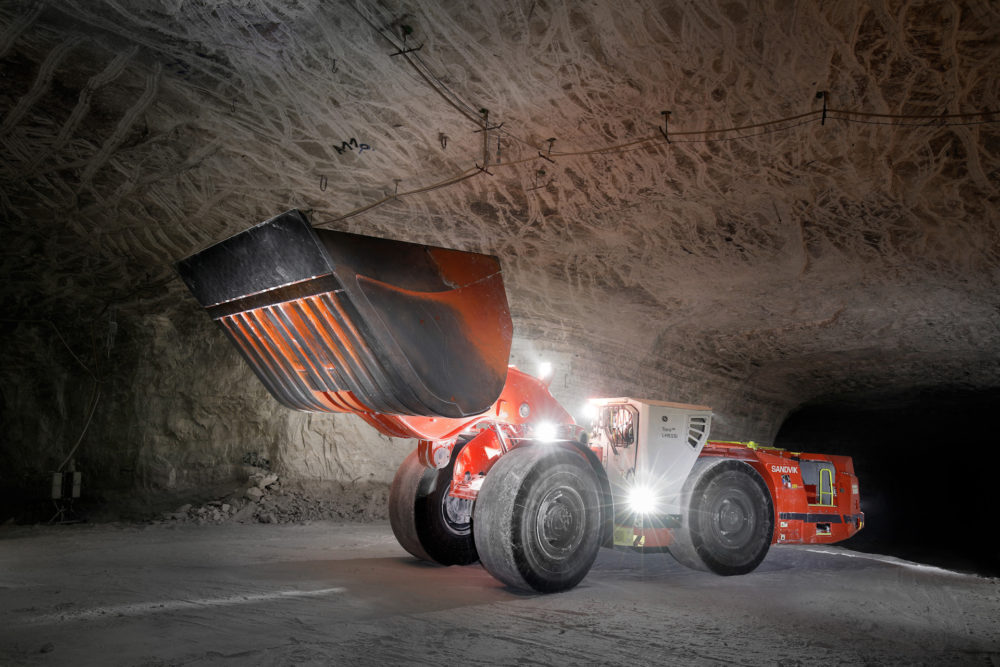Part 2: What is the correlation between transformational leadership and the profitability of Arizona copper mining companies

This article is the second of two articles: The previous article covered my hypothesis, and this article will discuss the findings from my research.
Demographics and Leadership Style
An interesting finding of this study was the correlation between demographic categories and leadership style. Most of leaders who have more than 16 years in the mining industry are more than 50 years old and have total top management team (TMT) tenure of more than 10 years. The comparison between organizational tenure of company leaders did reveal a significant difference.
When comparing the companies with the lowest copper price per pound and a “less transformational leadership (TFL) than the norm” group of leaders and the highest copper prices per pound and a “more TFL than the norm” group of leaders, there were several interesting findings. The company with the lowest cost per ton and a more transformational leadership (TFL) style had leaders with more than 16 years with their current organization, while the company with highest costs per ton but transactional leadership (TAL) style had few leaders with 16 or more years of organizational tenure. The higher cost, more TAL team had a lot of mining experience, more than 21 years on average, but less than five years of organization tenure.
The study showed evidence that a disadvantage of long-tenured TMT is isolation from outside information because they are no longer receptive to information that may threaten their perspective. From this, it can be anticipated that they will resist strategic change. I expanded on previous studies to look at tenure and its effects on the outcome in a sample of 100 organizations across different industries. I found that the tenure of the team did affect strategic choices, and long-tenured teams stayed within the norms of the industry. This finding was supported by other research. The less than five years of organization tenure mixed with the more than 21 years of average mining industry tenure may be the reason the company with the highest costs per tonne scored “more TFL than the norm” than the rest of the Arizona copper mining industry.
Another finding from this study was the relationship between gender and TFL. In the review of literature, this relationship had a moderate or negative impact on effectiveness. Specifically, the female leaders in the Arizona mining industry scored above the 95th percentile in active management-by-exception. Overall, this shows that the female leaders in Arizona copper mining industry scored higher in both transactional areas. This would identify them as “more transactional than the Arizona copper mining norm.” All the transformational scores were in line with the Arizona copper mining industry’s mean scores. Another notable finding was that the company with the highest costs per tonne, a company that scored as “more transformational than the norm,” did not have any female members on its TMT.
Another finding from this study was the relationship between advanced education and TFL. In the review of literature, this relationship had mixed results. The study showed evidence that no relationship exists between growth and profitability and formal education. Having said this, other research showed evidence that companies with TMTs with little formal management education have more variation in their performance than companies with a highly educated team. Specifically, the leaders in the Arizona mining industry that possessed an advanced education scored above the 70th percentile in active management-by-exception. This score placed them 25% below the Arizona copper mining industry scale score in this leadership style. The research shows that leaders with an advanced education scored below the Arizona copper mining industry score in both transactional areas. This would identify them as “less transactional than the Arizona copper mining norm.” All the transformational scores were in line with the Arizona copper mining industry’s mean scores.
The company with the highest costs per tonne was the outlier and its leaders scored “more transformational than the Arizona mining industry norm.” Half of their leaders possess an advanced education, which was 25% of the total respondents. This compares to the Arizona mining industry’s mean that shows 18.34% possessing advanced degrees. The mean for the other five companies is 15.15%, which may be a contributing factor in this company’s resultant proclivity toward TFL styles when compared to the rest of Arizona’s mining industry.
Conclusions
The investigation and data analysis bared the following findings: the data showed evidence that the managers employed more TAL styles compared to TFL; they quite often contemplated the moral and ethical consequences of their decisions and debated about what needed to be done but did not devote any time teaching and coaching; and managers with TAL styles concentrated on mistakes and deviations from standards frequently. In an industry that focuses on mining resources from the earth, this study showed evidence that the leaders employ leadership styles that mine their employees as well.
In the development of the constructs of TAL and TFL, there are two distinct schools of thought: dimensional and complementary. I investigated the dimensional school of thought by reviewing the literature, style, research, and my own observations. I felt that transformational and transactional leaders were distinct with TAL viewed as leaders that led by exchanging effort for something of value. On the opposite end of the continuum was TFL, who are leaders that engage others to rise to the occasion. This leadership style was not easily explained in traditional instrumental exchanges. I believe that all managers could be classified by leadership style according to their propensity for transactions versus transformation of subordinates.
Other researchers believe TAL and TFL styles are complementary constructs and not polar. These researchers felt that the achievement of goals and objectives required an integration of the two styles. They also felt that TFL would be ineffective without the inclusion of transactional styles. They also observed that every transformational leader must have transactional attributes or be supported by a leader with these attributes. In this school of thought, they branded transactional leaders as those who operate within the company systems and culture, avoid risks, keep time constraints, and prefer processes to maintain control. This type of manager is effective in predictable and stable environments where straightforward activities are measured against prior performance to determine success. This type of leadership is based on an exchange between the leader and follower for performance-meeting expectations.
Transformational leaders look for new approaches to getting tasks done, they seek appropriate risks, and look to extend beyond the status quo. I believe that these types of leaders are not reactionary but work to create and shape their environment. I propose that transformational leaders use transactional strategies when required while using symbolism and vision to increase effort. To accomplish this, leaders use intellectual awareness, possible outcomes, expand the individual needs, and ask their followers to look beyond self-interest to the health of the organization. I view followers as people with free will and the ability to exercise free choice behaviors. I further clarify that transactional leaders structure tasks with the “right way” to get them done and dependence on the leader for problem solutions.
Transformational leaders provide vision and strategy that empowers employees to solve problems. Unlike TAL, no instrument was available to test the validity, limitation, or application of this theory. I developed an instrument that would measure both TFL and TAL behaviors and investigate the relationship between these styles and the effectiveness of the work group. This instrument is the Wright Leadership Multi-Factor Leadership Questionnaire (WLMLQ), and it has been conceptually developed and empirically validated to reveal the complementary aspects of TAL and TFL with subscales to differentiate between leader behaviors.
Breaking down this study into the full range leadership model, the sampled population is identified as follows: Starting on the active and effective end of the model, the study found the leaders in this population sample to score weakest to strongest in the following order: individual consideration (1.70), when the leader acts as a coach, is below the fifth percentile on the WLMLQ scale; idealized influence attributes (1.85), relies on charismatic leaders, is below the fifth percentile on the WLMLQ scale; inspirational motivation (2.17) scored below the 10th percentile on the WLMLQ scale. This style offers challenge and meaning to the follower’s tasks, and it inspires the leader to convey a vision, which; idealized influence behavior (2.43), emphasizes a collective sense of values and mission, and scored below the 20th percentile on the WLMLQ scale; intellectual stimulation (2.77) scored just below the 50th percentile on the WLMLQ scale. This style fosters new approaches to task accomplishment. This behavior produces a stream of new ideas that challenge the employees and motivate them to rethink the way of leading people. All these leadership styles are transformational. Based on these findings, this group of leaders would be identified as “less transformational than the norm.” Moving closer to the middle of the full range leadership model, the next set of leadership styles are classified as transactional. Still on the active and effective end of the model, the next leadership style is contingent reward (2.92), which is just below the 50th percentile on the WLMLQ scale. This style has an incentive for the employee to attain the required level of performance; the final leadership style assessed in this study was active management by exception (2.96). Located in the middle of the full range leadership model, it is classified as not active or inactive and not effective or ineffective. This group of leaders scored just below the 95th percentile on the WLMLQ scale. This is when a manager acts when there is evidence that the task is not going according to the plan. Based on this study, this group of leaders are identified as “more transactional than the norm.”
Summary
By comparing the leadership styles and job performances of leaders, the results suggest that leadership styles could be linked to how the leaders act in their job performances. If a business plan with the concept of leadership developing programs expanding to all levels of an organization could be implemented and kept contemporary with new technology, the staff could be enhanced for future leadership.
In this study, it was concluded that TMTs in Arizona’s copper mining companies led with a predominantly TAL style, specifically, management-by-exception (active). While the WLMLQ was not designed to encourage the labeling of a leader as transformational or transactional, it is appropriate to identify this group of leaders as “more transactional than the norm.” However, not all the operating unit teams could be classified in this manner.
Dr. Nathan Wright is the founder and president of Transformational Performance Solutions LLC. He has a proven record of transforming organizations into revenue-producing powerhouses.





Comments